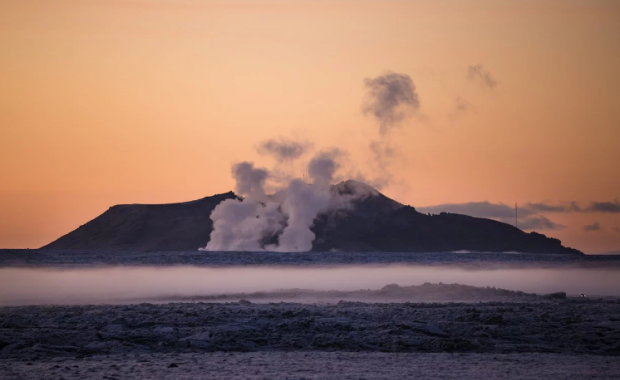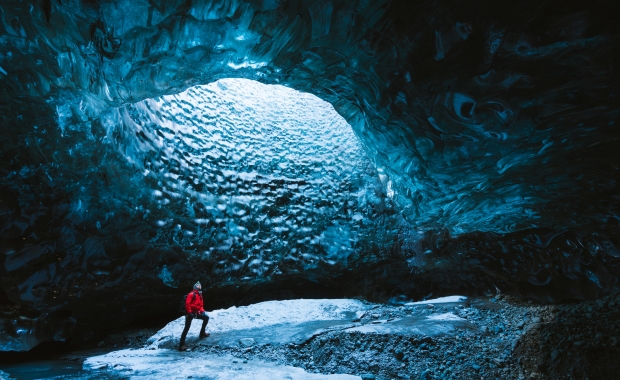The old fishing sheds in Grímsstaðavör, by the street Ægissíða in the West part of Reykjavík are the only remaining monument in Reykjavík to the old rowboat fisheries which were the basis of the Icelandic fishing industry until the 20th century. The sheds are located by one of the few remaining natural harbours which made Reykjavík one of the most important centres of fishing in South-West Iceland.
Read more: Old baiting sheds in Reykjavík to be restored to their former glory
While the restoration of the sheds has been discussed on several occasions, they remain in disrepair. Now activists and friends of Iceland’s coastal history are demanding the City step up and preserve the sheds which are in a state of serious disrepair.
The site, which is within walking distance of downtown Reykjavík and a short distance from Vesturbæjarlaug swimming pool, offers a fascinating glimpse into the past lives of Reykjavík residents, a world which has disappeared as the city has grown and modernized.
Remained in use until 1990s
Grímsstaðavör is one of many natural harbours in Reykjavík. Local fishermen on small boats used these harbours until the 20th century. The Grímsstaðavör harbour was one of seven natural harbours which were used on the southern coast of the peninsula. Almost all of these harbours have disappeared beneath landfills, which makes the Grímsstaðavör harbour all the more valuable.
Grímsstaðavör was also considered the best of the harbours on the southern coast of Reykjanes peninsula and remained in use longer than any other. It remained in use as late as the late 1990s.
A centre of the lumpfish fisheries in Reykjavík
While Grímsstaðavör does not look like much today, a few ramshackle shacks, it was a major fishing centre. As many as 16 different boats were operated from Grímsstaðavör at the same time. The fish was processed at the site and locals walked to the sheds to buy fresh fish directly from the fishermen. Throughout the decades fishermen used the Grímsstaðavör harbour to fish for the many fish species who inhabit the rich fishing grounds in the waters around Reykjavík, but in later decades the harbour was primarily used by lumpfish fisheries.
Read more: Tour archaeological digs of Basque whaling stations in the Westfjords
Lumpfish are caught close to the shore by small boats, and the coastal waters off the south coast of the Reykjavík peninsula provide excellent fishing grounds for the fish. The female lumpfish are caught for their roe: lumpfish caviar is a delicacy and a valuable export. The fish itself has been consumed locally, but in recent years frozen lumpfish have been exported to China.
The old fishing sheds in Grímsstaðavör, by the street Ægissíða in the West part of Reykjavík are the only remaining monument in Reykjavík to the old rowboat fisheries which were the basis of the Icelandic fishing industry until the 20th century. The sheds are located by one of the few remaining natural harbours which made Reykjavík one of the most important centres of fishing in South-West Iceland.
Read more: Old baiting sheds in Reykjavík to be restored to their former glory
While the restoration of the sheds has been discussed on several occasions, they remain in disrepair. Now activists and friends of Iceland’s coastal history are demanding the City step up and preserve the sheds which are in a state of serious disrepair.
The site, which is within walking distance of downtown Reykjavík and a short distance from Vesturbæjarlaug swimming pool, offers a fascinating glimpse into the past lives of Reykjavík residents, a world which has disappeared as the city has grown and modernized.
Remained in use until 1990s
Grímsstaðavör is one of many natural harbours in Reykjavík. Local fishermen on small boats used these harbours until the 20th century. The Grímsstaðavör harbour was one of seven natural harbours which were used on the southern coast of the peninsula. Almost all of these harbours have disappeared beneath landfills, which makes the Grímsstaðavör harbour all the more valuable.
Grímsstaðavör was also considered the best of the harbours on the southern coast of Reykjanes peninsula and remained in use longer than any other. It remained in use as late as the late 1990s.
A centre of the lumpfish fisheries in Reykjavík
While Grímsstaðavör does not look like much today, a few ramshackle shacks, it was a major fishing centre. As many as 16 different boats were operated from Grímsstaðavör at the same time. The fish was processed at the site and locals walked to the sheds to buy fresh fish directly from the fishermen. Throughout the decades fishermen used the Grímsstaðavör harbour to fish for the many fish species who inhabit the rich fishing grounds in the waters around Reykjavík, but in later decades the harbour was primarily used by lumpfish fisheries.
Read more: Tour archaeological digs of Basque whaling stations in the Westfjords
Lumpfish are caught close to the shore by small boats, and the coastal waters off the south coast of the Reykjavík peninsula provide excellent fishing grounds for the fish. The female lumpfish are caught for their roe: lumpfish caviar is a delicacy and a valuable export. The fish itself has been consumed locally, but in recent years frozen lumpfish have been exported to China.







